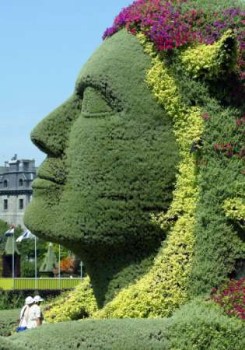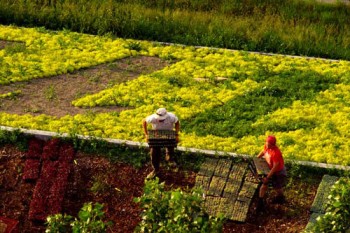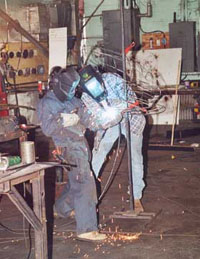|
Mosaiculture.
The art of sculpturing plants
 |
| The
giant plant sculpture titled, 'The Legend of Mother Earth,' is
displayed at an international mosaiculture exhibit in downtown
Montreal, August 12, 2003. The exhibit titled 'Myths and Legends,'
features 60 sculptures from participants representing 32
countries. REUTERS/Shaun Best |
Mosaiculture is defined as the art of composing a
motif, an image,
a picture or a sculpture using carefully selected and pruned plants.
Mosaiculture és the fruit of a
symbiosis of several artforms that have borrowed their main
elements from three dimensional structures. From paintings we
get the multitude of colours and from horticulture, the passion of
flowers and plants that blossom in the right environment, creating
constantly transforming and living pieces of artwork. Mosaiculture
illustrates the most spectacular and difficult horticultural
technique
Mosaiculture remains
the most spectacular form of horticultural expression. The creation of
highly complex designs, geometric or imaginary figures, scenes,
numbers or letters, using flowering or foliage plants, remains however
an art form for experienced horticulturists. It has its origin in the
embroidered flower beds (often termed ‘carpet beds’) which
composed Renaissance gardens.
 This true
horticultural technique meets precise standards in terms of plant
variety and density of planting and pruning. It has generally been
associated with parks and public spaces for reasons of visual impact
and upkeep costs. Nowadays, mosaiculture has evolved into different
forms including elaborate floral three dimensional sculptures. The
floral palette has integrated traditional annual plants, enabling the
creation of detailed artistic renditions. This true
horticultural technique meets precise standards in terms of plant
variety and density of planting and pruning. It has generally been
associated with parks and public spaces for reasons of visual impact
and upkeep costs. Nowadays, mosaiculture has evolved into different
forms including elaborate floral three dimensional sculptures. The
floral palette has integrated traditional annual plants, enabling the
creation of detailed artistic renditions.
 Before
becoming a solid metallic structure filled with sphagnum moss and
covered with plants, a three-dimensional work first begins with a
drawing and a technical design. The metal structure must be
constructed in accordance with very strict building standards and
requirements, and such a structure, containing thousands of pounds of
wet soil and plants must be stable enough to support its own weight,
not to mention withstanding inclimental weather. By virtue of
different principles, the structure must contain the sphagnum moss
that becomes its fertile soil, thanks to constant and careful
irrigation. Some of the more complex structures even have their own
built-in irrigation systems. Before
becoming a solid metallic structure filled with sphagnum moss and
covered with plants, a three-dimensional work first begins with a
drawing and a technical design. The metal structure must be
constructed in accordance with very strict building standards and
requirements, and such a structure, containing thousands of pounds of
wet soil and plants must be stable enough to support its own weight,
not to mention withstanding inclimental weather. By virtue of
different principles, the structure must contain the sphagnum moss
that becomes its fertile soil, thanks to constant and careful
irrigation. Some of the more complex structures even have their own
built-in irrigation systems.
|
